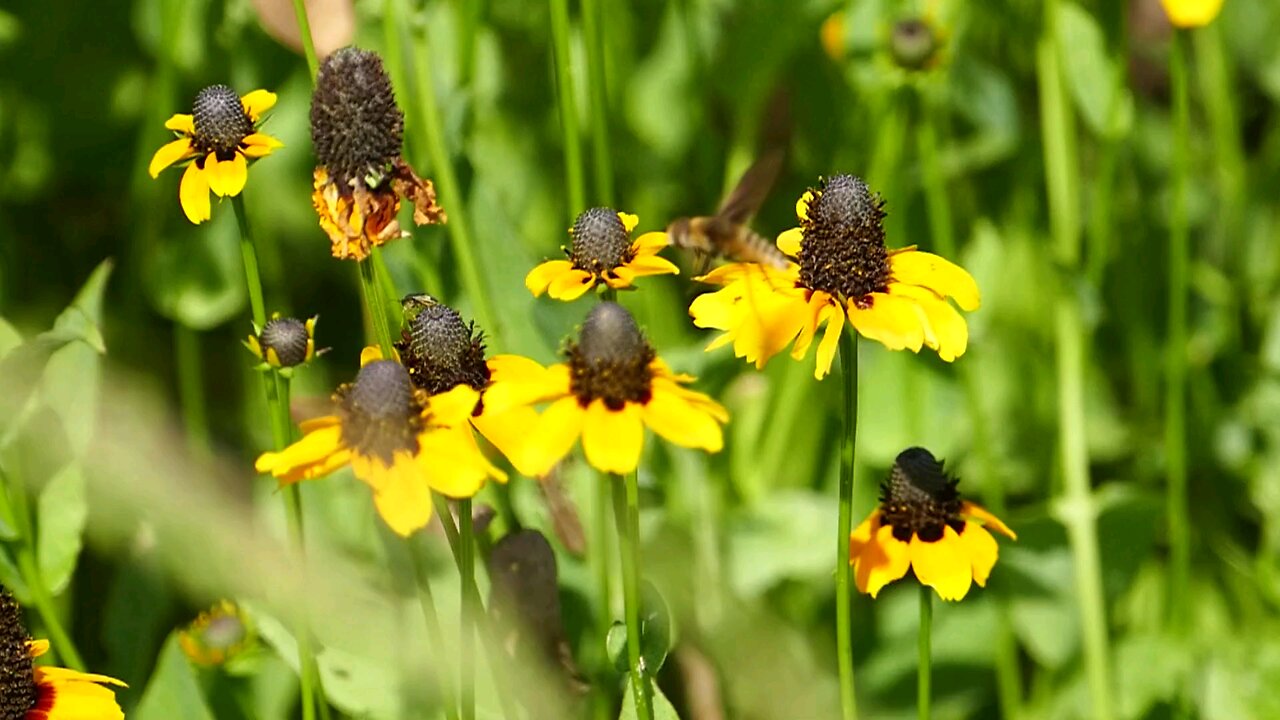Premium Only Content

"Clasping Coneflower: A Hardy Flower for Pollinators"
The clasping coneflower, scientifically known as Rudbeckia amplexicaulis, is a perennial flowering plant that belongs to the Asteraceae family. It is native to the central and eastern regions of the United States, thriving in a variety of habitats. Here’s an overview of the clasping coneflower:
Description:
Appearance: The clasping coneflower typically grows to a height of about 1 to 3 feet (30 to 90 cm). It features distinctive yellow daisy-like flowers with a central brown or black cone, giving it the classic "cone flower" appearance.
Leaves: The leaves are lance-shaped and clasp the stem, which is characteristic of the species. They are dark green and can be somewhat hairy.
Blooming Season: The flowers bloom from mid-summer to early fall, usually from July to September, providing a vibrant display during this period.
Habitat and Distribution:
Rudbeckia amplexicaulis is commonly found in prairies, open woods, and along roadsides. It prefers well-drained soils and can tolerate a range of conditions, including drought.
This species is native to a variety of states, particularly in the Midwest and the eastern United States, where it is often a part of the natural flora.
Cultivation:
Clasping coneflower is favored for its ornamental value and is often used in wildflower gardens, meadows, and naturalized areas.
It thrives in full sun but can also tolerate partial shade. It is relatively low-maintenance and can be grown in average to poor soil conditions.
Deadheading spent flowers can promote extended blooming, and the plant is generally resistant to deer and pests.
Ecological Importance:
The clasping coneflower is beneficial for pollinators, attracting bees, butterflies, and other insects. It serves as a food source for these species and helps support local ecosystems.
Uses:
In addition to its ornamental use, the clasping coneflower can be part of restoration projects, helping to reestablish native plant communities.
It may also have traditional medicinal uses, although it is not as commonly noted for medicinal properties compared to other species in the Rudbeckia genus.
Conclusion:
Rudbeckia amplexicaulis, or clasping coneflower, is an attractive and hardy plant that brings bright color and ecological benefits to gardens and natural landscapes. Its resilience and appeal make it a popular choice among gardeners and conservationists alike.
-
 LIVE
LIVE
vivafrei
4 hours agoViva & Barnes Live with The Duran - World Politics, World News, & World War?
1,859 watching -
 LIVE
LIVE
Steven Crowder
3 hours ago🔴Pillaging America: Lefty Celebs Prove Exactly Why Every Illegal Must Get Out
28,267 watching -
 LIVE
LIVE
Tim Young
59 minutes agoShutdown Special LIVE w/ 19 members of Congress! Powered by @Kalshi
54 watching -
 1:05:29
1:05:29
The Rubin Report
1 hour agoFight Over Trump Lies Gets so Ugly It Could Be Eric Trump’s Final Appearance on This Show
20.4K17 -
 1:32:12
1:32:12
Nikko Ortiz
2 hours agoRealistic COP Simulator | Rumble LIVE
14.5K -
 LIVE
LIVE
LFA TV
13 hours agoLIVE & BREAKING NEWS! | WEDNESDAY 10/8/25
4,117 watching -
 LIVE
LIVE
The Mel K Show
1 hour agoMORNINGS WITH MEL K -Lobbyists and Greed have Replaced the Will of We the People 10-8-25
674 watching -
 LIVE
LIVE
The Shannon Joy Show
1 hour agoGold Surge Persists Signaling Recession, More Inflation & Potential War - Live W/ Peter Schiff!
211 watching -
 LIVE
LIVE
Grant Stinchfield
1 hour agoThe People Have Spoken: Trump Rising, Democrats Reeling
102 watching -
 LIVE
LIVE
Trumpet Daily
1 hour agoTrumpet Daily LIVE | Oct 8, 2025
165 watching
